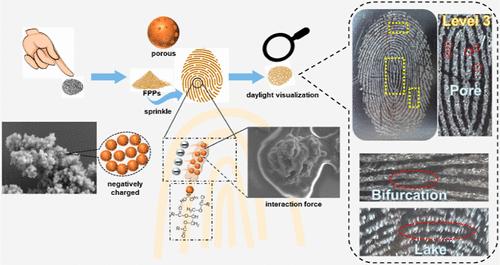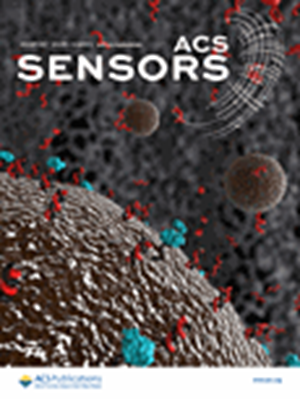Daylight Visualization of Latent Fingerprints Exceeding Level 3 Details through Contradictory Electrostatic and Hydrogen-Bonding Interactions
IF 8.2
1区 化学
Q1 CHEMISTRY, ANALYTICAL
引用次数: 0
Abstract
Daylight visualization of latent fingerprints (LFPs) is highly desirable due to its convenience and safety for inspectors. However, achieving this visualization with details exceeding level 3 using nontoxic materials presents a significant challenge. Here, we address this challenge by utilizing cyclosiloxane-linked fluorescent porous polymers (FPPs) as the developers. These FPPs were synthesized from 2,4,6,8-tetramethyl-2,4,6,8-tetravinylcyclotetrasiloxane and brominated monomers via Heck reactions. The resulting FPPs, available as powders in various colors, exhibit high porosity and strong fluorescence. By employing the classical powder dusting method with FPPs, LFPs with level 1–3 details become visible on various substrates, including copper, iron, aluminum, tinfoil, and wood, under daylight. This approach provides high resolution and contrast with strong resistance to background interference on colored substrates. The efficient visualization is attributed to contradictory electrostatic and hydrogen-bonding interactions between FPPs and fingerprint secretions, which ensure strong adhesion of the materials exclusively to the ridges of fingerprints rather than the furrows. Furthermore, the FPPs are noncytotoxic and do not impede DNA extraction and identification after LFP visualization. This study represents the first example of daylight visualization of LFPs with details surpassing level 3 using nontoxic developers, thereby mitigating the risks associated with material toxicity and light exposure for inspectors. These findings highlight the potential of FPPs as efficient developers for LFP visualization in crime scenes. This straightforward and broadly applicable protocol may pave the way for further advancements in daylight visualization methods for LFPs.

求助全文
约1分钟内获得全文
求助全文
来源期刊

ACS Sensors
Chemical Engineering-Bioengineering
CiteScore
14.50
自引率
3.40%
发文量
372
期刊介绍:
ACS Sensors is a peer-reviewed research journal that focuses on the dissemination of new and original knowledge in the field of sensor science, particularly those that selectively sense chemical or biological species or processes. The journal covers a broad range of topics, including but not limited to biosensors, chemical sensors, gas sensors, intracellular sensors, single molecule sensors, cell chips, and microfluidic devices. It aims to publish articles that address conceptual advances in sensing technology applicable to various types of analytes or application papers that report on the use of existing sensing concepts in new ways or for new analytes.
 求助内容:
求助内容: 应助结果提醒方式:
应助结果提醒方式:


